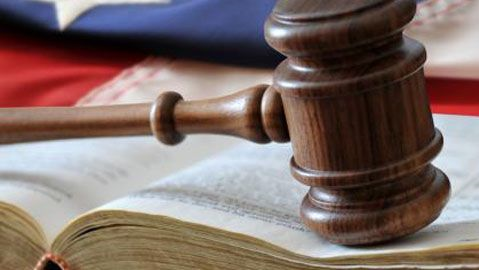eDiscovery Daily Blog
Despite Protective Order, Court Orders Plaintiff to Produce Source Code and Log File Printouts: eDiscovery Case Law
In Opternative, Inc. v. Jand, Inc., 17-CV-6936 (RA)(SN) (S.D.N.Y. July 12, 2019), New York Magistrate Judge Sarah Netburn granted in part and denied in part the defendant’s motion to compel the plaintiff to produce printouts of two files of source code, a printout of a log file, and a listing of directories and files. Judge Netburn ordered the plaintiff to produce the source code and log file printouts requested, but not the file directory listing, choosing to reserve judgment on that for the time being.
Case Background
In this case involving alleged unlawful use of information that the plaintiff claimed the defendant used to launch a competing online eye-examination service, a big part of the case came down to source code. The parties agreed to a protective order where “any material designated as ‘Highly Confidential — Source Code’ will not be produced in a native format…Instead, the source code must be ‘made available for inspection, in a format allowing it to be reasonably reviewed and searched, during normal business hours or at other mutually agreeable times at an office of the Producing Party’s counsel or another mutually agreed upon location’…The on-site review is highly circumscribed…It must be conducted in a ‘secured room without Internet access or network access to other computers’…The inspecting party is prohibited from copying, removing, or transferring any files from the secure location…The inspecting party may, however, request printouts ‘of limited portions of source code that are reasonably necessary for the preparation of court filings, pleadings, expert reports, discovery responses, or demonstratives (‘Papers’), or for deposition or trial, but shall not request paper copies for the purposes of reviewing the source code other than electronically.’”
Pursuant to that Order, the plaintiff designated the source code of an alleged prototype developed by Brian Strobach as highly confidential source code and the defendant’s counsel and its expert witness inspected the source code at the offices of Plaintiff’s counsel in May 2019, for about five hours. The defendant followed up with that review by requesting printouts of twenty files, consisting of as much as 12,000 lines of code. The plaintiff responded that it believed that this request was not compliant with the Protective Order, but that it “would be happy to consider a narrower request.” In response, Defendant narrowed its request to printouts of: (1) two files of source code comprising 354 lines of code fitting on 6 pages; (2) a log file; and (3) a directory of the files contained in the source code written by Strobach. The plaintiff refused, arguing that the request for the two files was not compliant with the protective order and that it would produce the log file and directory only if the defendant agreed to a reciprocal exchange.
Judge’s Ruling
With regard to the source code request and the plaintiff’s objections, Judge Netburn characterized the plaintiff’s belief that the Protective Order may allow for the use of printouts during a deposition, but that it prohibits requests for the purpose of preparing for the deposition as “frivolous”, stating “[t]hat definition would require attorneys writing their deposition outlines to sit in a secured room with the source code, away from their offices, without access to the internet or any other network. That is a significant burden that also would do nothing to promote the confidentiality of the source code.” With regard to the plaintiff’s other objection that the defendant did not articulate why these two files were reasonably necessary for Strobach’s deposition, Judge Netburn ruled that the defendant had provided “a reasonably necessary basis for the request” that “likely would [not] be narrowed with further on-site review.”
With regard to the log file request, Judge Netburn referred to the impasse as “truly strange” and ordered the plaintiff to produce the file, ruling that “Plaintiff has not demonstrated anything resembling good cause” for denying the request and that their contention of the defendant’s definition of “Highly Confidential — Source Code” was “an airing of grievances” and “not a basis for denying Defendant’s motion.”
As for the file directory request, Judge Netburn denied the defendant’s motion without prejudice, stating: “Instead of blindly tilting the balance of this standoff, the Court will reserve its judgment. If Plaintiff or Defendant is unable to obtain file directories to its satisfaction, then they should file properly supported briefing with the Court.”
So, what do you think? Do you agree with the judge’s reasons for ordering production of the source code and log file? Please let us know if any comments you might have or if you’d like to know more about a particular topic.

Case opinion link courtesy of eDiscovery Assistant.
Sponsor: This blog is sponsored by CloudNine, which is a data and legal discovery technology company with proven expertise in simplifying and automating the discovery of data for audits, investigations, and litigation. Used by legal and business customers worldwide including more than 50 of the top 250 Am Law firms and many of the world’s leading corporations, CloudNine’s eDiscovery automation software and services help customers gain insight and intelligence on electronic data.
Disclaimer: The views represented herein are exclusively the views of the author, and do not necessarily represent the views held by CloudNine. eDiscovery Daily is made available by CloudNine solely for educational purposes to provide general information about general eDiscovery principles and not to provide specific legal advice applicable to any particular circumstance. eDiscovery Daily should not be used as a substitute for competent legal advice from a lawyer you have retained and who has agreed to represent you.

